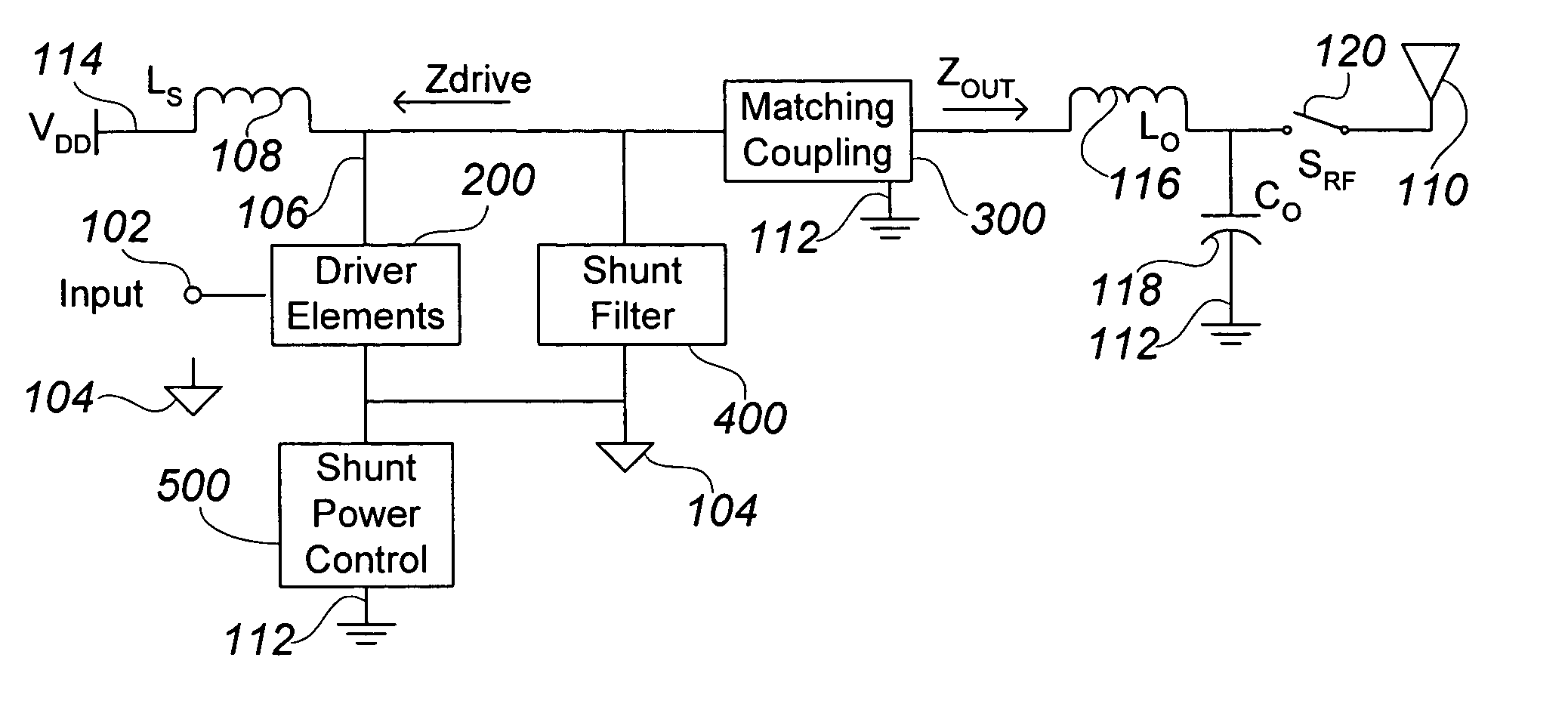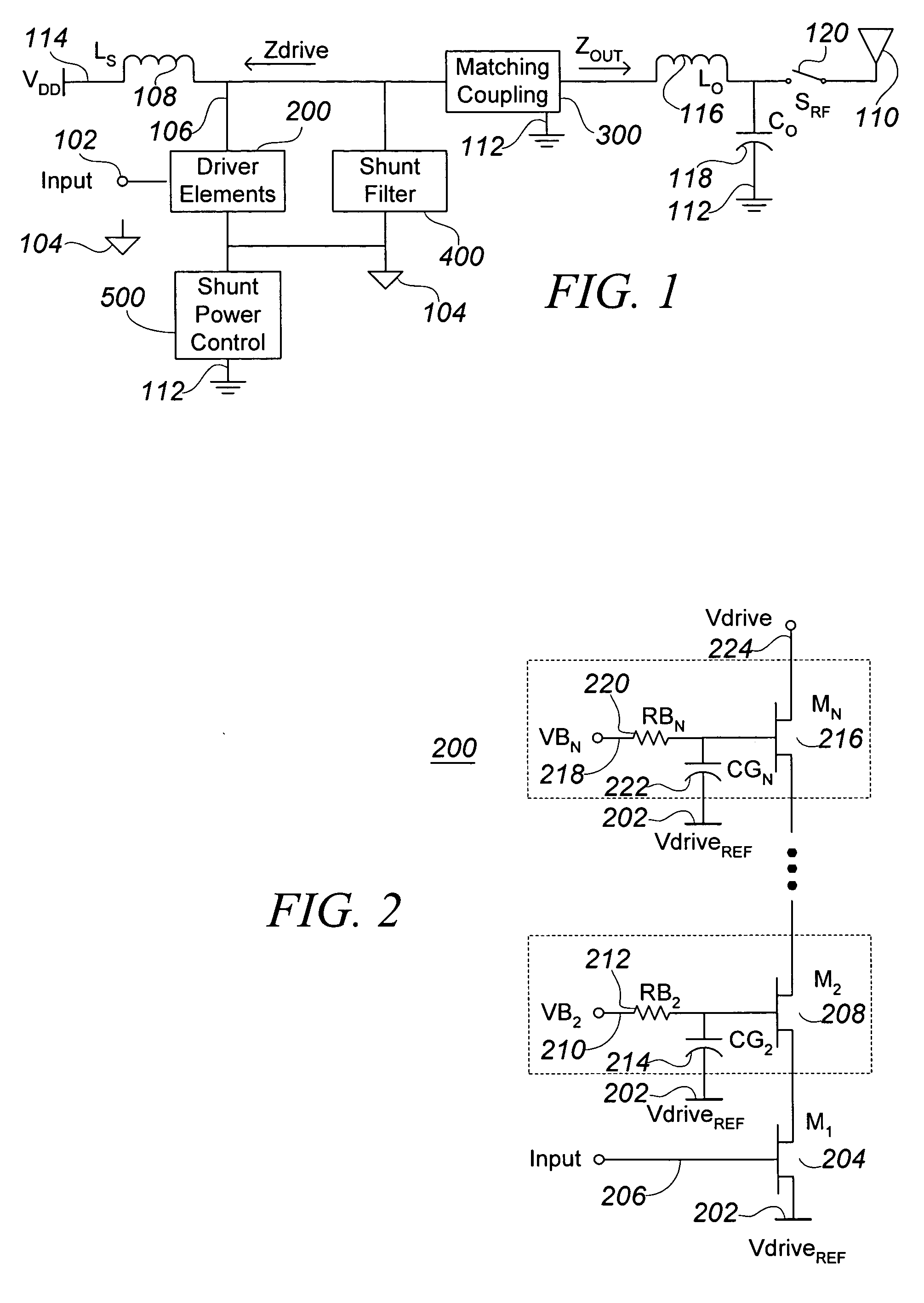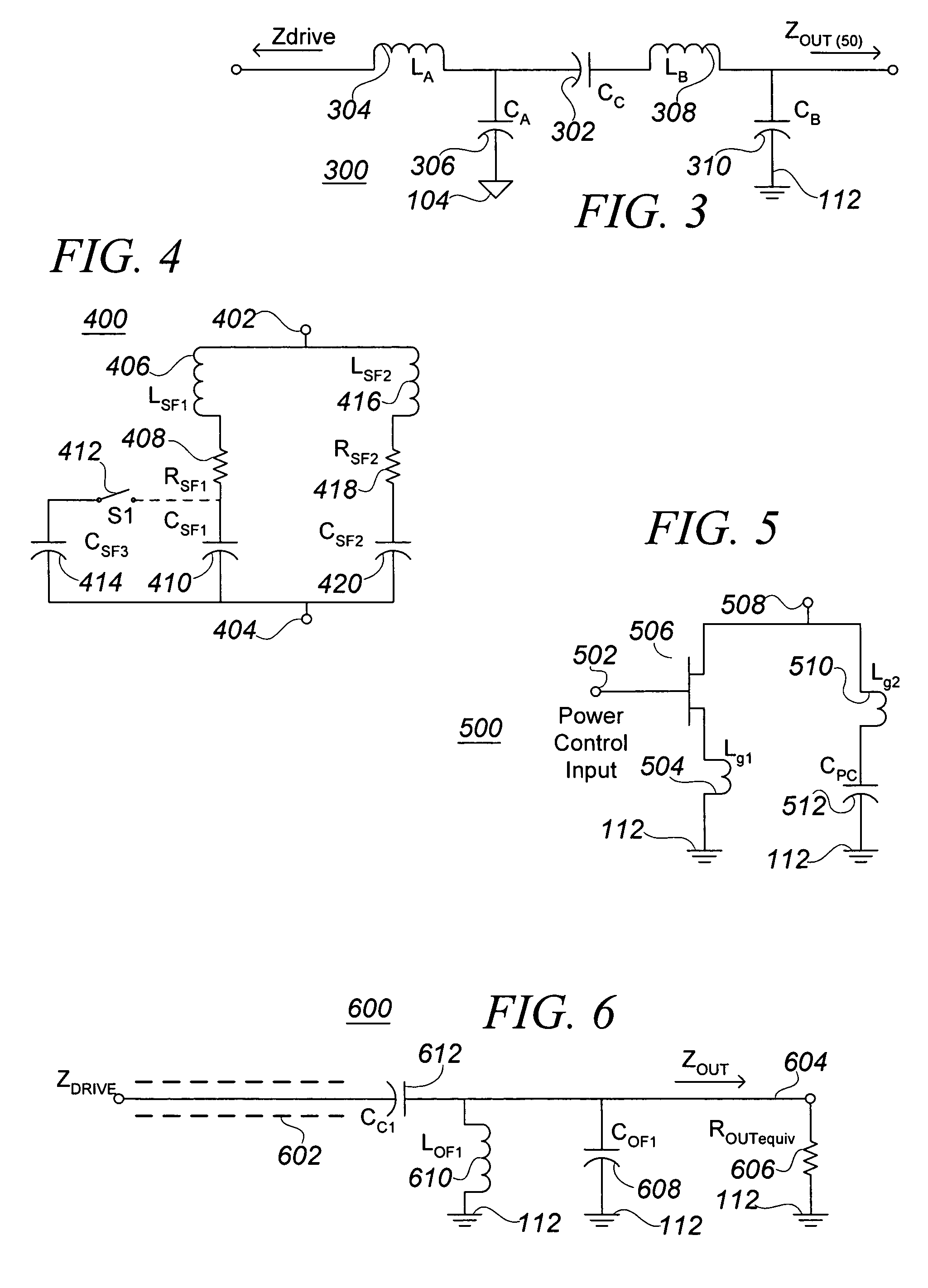Integrated RF front end with stacked transistor switch
- Summary
- Abstract
- Description
- Claims
- Application Information
AI Technical Summary
Benefits of technology
Problems solved by technology
Method used
Image
Examples
Embodiment Construction
I. Power Amplifier Overview
[0035]FIG. 1 is a block diagram of an RF power amplifier (PA). The illustrated RF PA is quite general, in that varying the biasing of devices in a driver elements block 200, and / or varying details of the other blocks, will permit the RF PA illustrated in FIG. 1 to operate in any of amplifier classes A, B, C, E, F, or, as described further herein, as an iClass amplifier. FIGS. 2-5 each show an exemplary circuit to implement one of the blocks shown in FIG. 1.
[0036] An input 102 is provided to the PA with respect to a circuit reference, or common, 104. The input 102 generally comprises a properly biased signal at a center drive frequency, f0. In response to the input 102, the driver elements block 200 controls conduction between a drive output node 106 and the circuit common 104. The driver elements block 200, in conjunction with current from VDD via an RF choke (RFC) LS 108, provides a signal having a particular impedance Zdrive. Zdrive may vary with freque...
PUM
 Login to View More
Login to View More Abstract
Description
Claims
Application Information
 Login to View More
Login to View More - R&D
- Intellectual Property
- Life Sciences
- Materials
- Tech Scout
- Unparalleled Data Quality
- Higher Quality Content
- 60% Fewer Hallucinations
Browse by: Latest US Patents, China's latest patents, Technical Efficacy Thesaurus, Application Domain, Technology Topic, Popular Technical Reports.
© 2025 PatSnap. All rights reserved.Legal|Privacy policy|Modern Slavery Act Transparency Statement|Sitemap|About US| Contact US: help@patsnap.com



